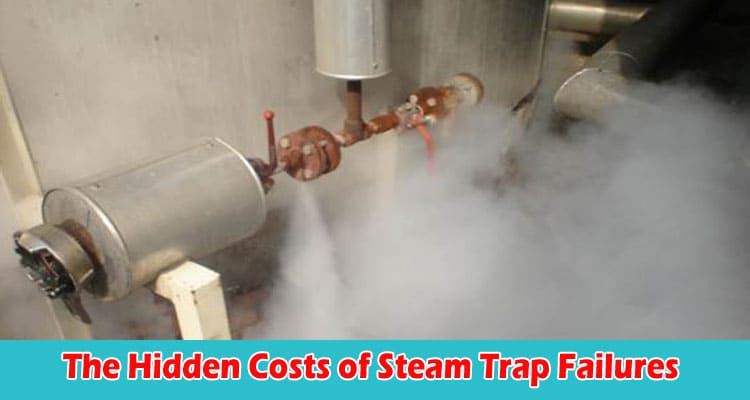Steam traps play a critical part in steam systems, ensuring their efficiency and functionality are maintained. These devices remove condensate, air and other non-condensable gasses automatically, which prevents water hammering and keeps your steam distribution system working properly. The failure of a steam trap can be highly problematic and costly, exposing companies to hidden costs they may not be aware of.
What are steam traps and why are they important in a steam system?
Steam traps are mechanical devices that provide a critical system function in steam systems by removing condensate, air and other non-condensable gasses without losing live steam. They operate to maintain the balance between removing condensate and allowing live steam to pass. These traps are important as they remove condensate efficiently, preventing the build-up of water that could reduce heat transfer efficiency, damage equipment, and result in water hammer.
What are the potential consequences when a steam trap fails?
Failed steam traps are unable to discharge condensate as intended, allowing it to accumulate. This creates a barrier to heat transfer and reduces energy efficiency. The steam system must work for longer periods or at higher pressures to maintain the required temperature or pressure. Studies have shown that a single failed steam trap in an industrial plant could cost several thousand dollars in steam loss annually due to increased system energy loss and decreased equipment reliability. Allowing the accumulation of condensate due to steam trap failures also has additional associated costs.
Excess condensate in the system can lead to corrosion, erosion, and scale formation on the internal surfaces of steam equipment and piping. These conditions result in increased maintenance and repair (cleaning, replacing damaged parts, etc.) expenses. Again, later repair of steam trap failures that were left unattended will result in even more costly damage to other system components.
Production Downtime
Steam trap failures can also affect production processes resulting in costly downtime. Depending on the industry and operation, the failure of steam traps can affect manufacturing processes, degrade system performance, and affect product quality. For instance, in the food and beverage industry, steam is used to cook, sterilize, and package a variety of products. However, when steam trap failure occurs, production may stop, leading to large financial losses.
Equipment Damage and Reduced Lifespan
When steam traps fail, they can damage steam system components such as valves, pressure regulators, and heat exchangers. Condensate backed up from the steam trap failure can cause water hammer. Water hammer is the sudden and forceful impact of the condensate against the surfaces of the system. It can cause the equipment to crack, fracture, or deform, which can decrease longevity and incur expensive repairs or replacements. Additionally, the increased stress on the system can cause a steam trap failure to result in decreased overall equipment reliability.
The Hidden Costs of Steam Trap Failures
The hidden costs of steam trap failure are frequently ignored and this often leads to substantial savings and increases in system performance being missed. We’ll look at some specific areas where these costs manifest themselves.
Energy Losses
When steam traps fail, they are often stuck open, allowing steam to escape through the condensate discharge orifice. The amount of energy lost can be determined based on the size of the failed steam trap, steam pressure and frequency of steam trap failures. Estimating energy losses from failed steam traps allows organizations to understand the financial impact and the potential for significant savings.
Increased Maintenance and Repair Expenses
When steam traps fail, they leak and condensate accumulates. This promotes corrosion damage. Corrosion can eat away system components, requiring systems to be plugged. Condensate accumulation can also wash out lubrication from bearings or damaged equipment. Maintenance and repair expenses include manpower to troubleshoot and repair failed traps and replacement of damaged equipment. By promptly identifying and repairing steam traps and conducting regular steam trap inspections, organizations can minimize maintenance and repair work.
Production Downtime
Steam trap failures can halt production processes, resulting in expensive downtime. For industries that rely heavily on steam – such as pharmaceuticals, chemicals, paper manufacturing – any disruption in the supply of steam can bring operations to a standstill. The financial cost of production downtime is significant – not only the direct loss of revenue, but also the damage that may occur to customer relationships and the market reputation. Prevention of steam trap failures is essential to ensure production remains undisrupted.
Equipment Damage and Reduced Lifespan
Failed steam traps cause water hammer, which is the sudden impact of condensate against the system’s surfaces. This phenomenon can damage equipment – including creating cracks, fractures or deformation in system components. The repair or replacement of damaged equipment is expensive, as is reduction in equipment lifespan due to system stress – which increases the need for early and often.
How to Prevent Steam Trap Failures
Maximizing system efficiency and eliminating the numerous hidden costs we’ve discussed can be achieved by implementing certain measures to prevent steam trap failures. Organizations should:
Monitor – It’s essential that organizations continually monitor steam trap performance and the condition of their system. This is usually facilitated by the use of wireless devices that monitor and provide feedback on the system’s overall performance.
Train – Staff should be properly trained to understand the basics of steam, including the theory behind condensation, the different types of steam traps, and the key causes of trap failures. In particular, they should be taught how to recognize and rectify steam trap failures in their facility.
Repair and Replace – Organizations must have a plan in place for when a trap fails. Some organizations operate with a large enough “trapped” population that they can maintain 100% of the steam traps in the facility on a regular six-month interval, repairing or replacing those that have failed.
Pilot Test – As technology continues to advance, even the latest and greatest necessarily needs to be proven reliable. The technology behind ultrasound and other advanced types of traps should be exposed to an accurate portrayal of your application before it’s implemented. In general, it’s advisable to conduct a pilot test in your facility to determine if new technology lives up to the manufacturers’ claims.
- Routine Inspection and Maintenance
Inspecting and maintaining steam traps routinely is vital to identifying issues and preventing failures. By establishing an inspection and cleaning schedule, organizations can keep steam traps functional and prevent the build-up of condensate that fails to drain. Inspections should be carried out at various intervals depending on factors such as trap type, operating conditions, and failure history.
Possible tasks during a steam trap maintenance procedure include verifying trap performance, leak testing, and performing blowdowns. Organizations that follow suggested maintenance practices and address issues as they are found stand to reduce the likelihood of steam trap failures, and the subsequent costs of these failures.
- Training and Education
A well-educated workforce is key to preventing steam trap failures. Organizations can hold regular training sessions or workshops for maintenance personnel to increase their knowledge of steam trap operation, maintenance, and troubleshooting. Such programs should include information on trap types, inspection techniques, and the impact of failed steam traps on system efficiency. In addition, a number of resources exist — including manuals, online materials, and industry conferences — that can aid in the pursuit of lifelong learning and keeping up to speed on the latest developments in steam trap technology.
Upgrading to modern steam traps can significantly improve reliability and reduce failures. The latest generation of steam trap solutions features new capabilities, such as self-adjusting, tighter seal, reduced steam loss, corrosion resistant options, and more. The installation of these modern steam traps can reduce the incidence of trap failures and ensure superior system performance. Factors, such as compatibility with infrastructure, cost-benefit analysis and the long-term implications must be evaluated prior to an upgrade.
Steam Trap Monitoring and Analytics Systems
Proactive implementation of a steam trap monitoring system to identify failing steam traps is critical. Steam trap monitors are implemented through the use of technologies such as ultrasonic sensors, temperature and pressure monitoring to measure trap performance. The steam trap monitoring system provides real-time data on the health of the steam traps, and enables rapid notification of a trap failure, driving preventative maintenance. Utilizing data analytics aids in extracting information, patterns and correlations within the data, such as pressure across the trap, vibration, and numerous other data points, to further assist in identifying failing traps and driving maintenance optimization.
Conclusion
Steam trap failures’ hidden expenses in energy efficiency, maintenance costs, production downtime, and equipment life can be expensive, indeed. By understanding and managing those costs, organizations can realize big savings and ensure smooth operation of their steam systems.
Routine inspection and maintenance, training and educational programs, upgrading some or all to better modern steam traps, and using monitoring and analytics systems can head off steam trap failures. A proactive approach to its maintenance can mean better energy efficiency, lower repair expenses, more production and longer equipment life.
By making steam trap maintenance a priority and investing in some or all of these preventive strategies, organizations can better protect their assets, optimize their systems, and in the end, improve their bottom lines. Preventing steam trap failures is about a lot more than saving some costs — it’s about systems we depend on every day in so many different industries for reliability and efficiency.








